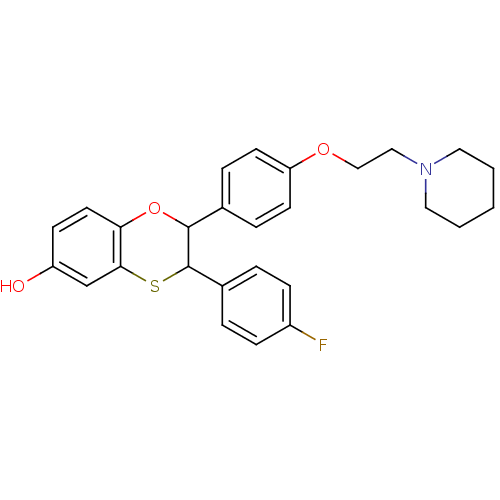BDBM50146265 3-(4-Fluoro-phenyl)-2-[4-(2-piperidin-1-yl-ethoxy)-phenyl]-2,3-dihydro-benzo[1,4]oxathiin-6-ol::CHEMBL93546
SMILES Oc1ccc2OC(C(Sc2c1)c1ccc(F)cc1)c1ccc(OCCN2CCCCC2)cc1
InChI Key InChIKey=PXQIHYPEOSFFBY-UHFFFAOYSA-N
Data 4 IC50
Activity Spreadsheet -- Enzyme Inhibition Constant Data from BindingDB
 Found 4 hits for monomerid = 50146265
Found 4 hits for monomerid = 50146265
Affinity DataIC50: 67nMAssay Description:Displacement of [3H]-17-beta-estradiol from full length human estrogen receptor betaMore data for this Ligand-Target Pair
Affinity DataIC50: 1.56E+3nMAssay Description:Displacement of [3H]-17-beta-estradiol from full length human estrogen receptor alphaMore data for this Ligand-Target Pair
Affinity DataIC50: 3.80nMAssay Description:Displacement of [3H]-17-beta-estradiol from full length human estrogen receptor alphaMore data for this Ligand-Target Pair
Affinity DataIC50: 94nMAssay Description:Potency in cellular transactivation assay utilizing HEK-293 cells stably co-transfected with human estrogen receptor alpha and the alkaline phosphata...More data for this Ligand-Target Pair
